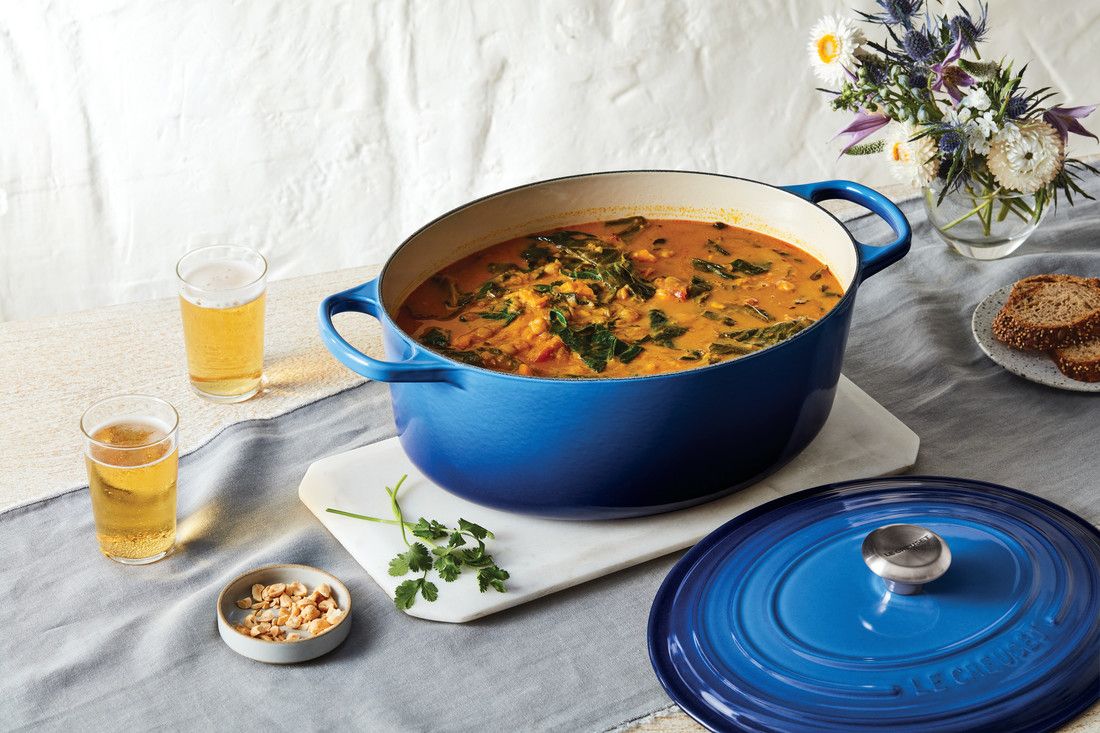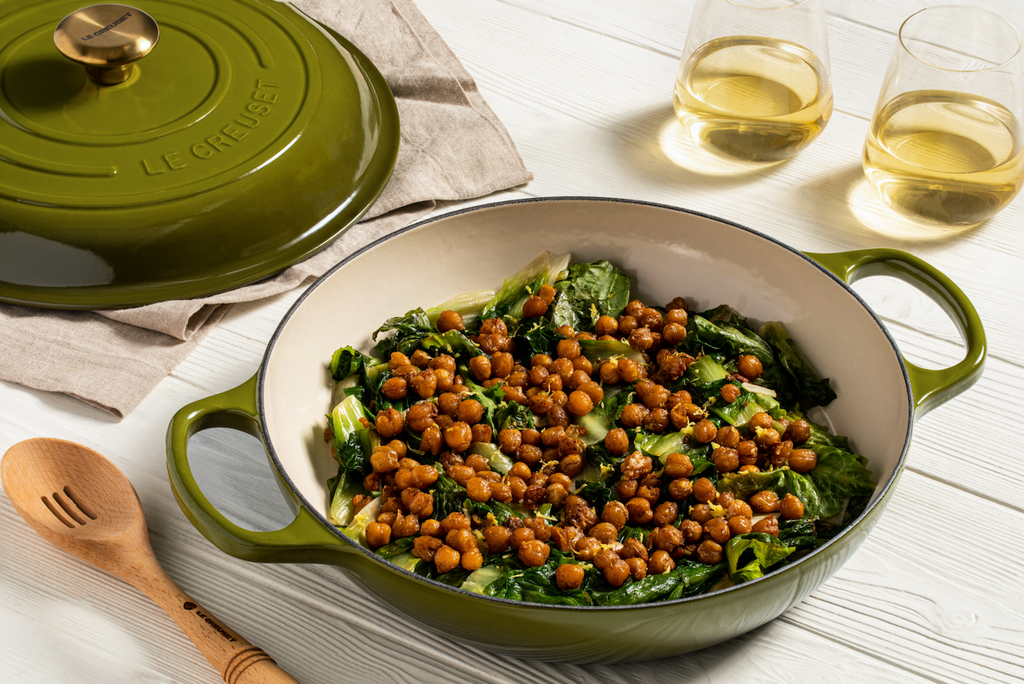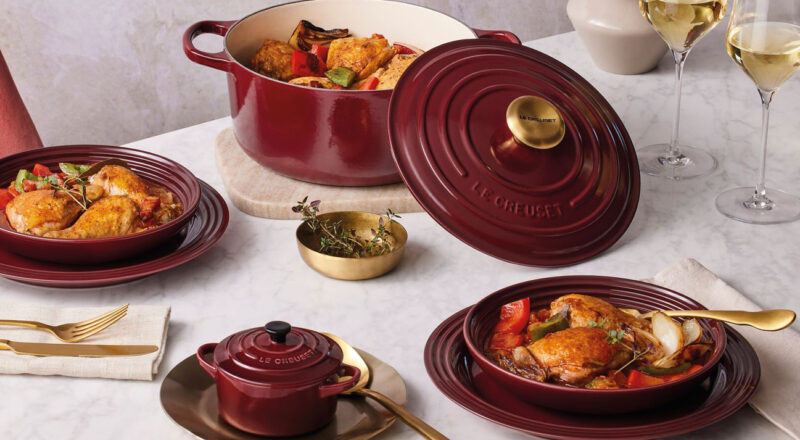The art of cooking involves a delicate balance of flavors, and mastering this skill can elevate your dishes to new heights. One essential tool for achieving this is the cast iron braiser. Understanding how to layer flavors in a cast iron braiser is key to creating meals that are not only delicious but also memorable. In this article, we will explore the techniques and secrets of layering flavors using this versatile kitchen tool.

The Importance of Flavor Layering
Flavor layering is a technique that involves adding different ingredients at various stages of cooking. This method enhances the depth and complexity of a dish, making it more satisfying to the palate. In a cast iron braiser, the even heat distribution and excellent heat retention make it the perfect vessel for this cooking technique.
Understanding the Cast Iron Braiser
A cast iron braiser is a versatile piece of cookware that combines the features of a skillet and a Dutch oven. It is ideal for browning, braising, and simmering, making it perfect for dishes that require flavor layering. For a deeper understanding of the differences between a braiser and other cookware, visit cast iron braiser vs casserole pot.
Getting Started with Flavor Layering
1. Choosing the Right Ingredients
The first step in layering flavors is selecting ingredients that complement each other. Consider the flavor profile of each ingredient and how they will interact. Fresh herbs, spices, aromatic vegetables, and quality proteins are excellent choices.
2. Building a Flavor Base
Start by building a flavor base with aromatics like garlic, onions, and celery. Saut these ingredients in your cast iron braiser to release their flavors and create a foundation for your dish. For tips on preventing rust while cooking, check out prevent rust on cast iron braiser.
Layering Techniques
3. Browning Proteins
Browning proteins like chicken, beef, or pork in the braiser adds a rich, savory flavor to your dish. Make sure to brown them thoroughly on all sides to develop a deep caramelization.
4. Deglazing the Pan
Deglazing is a crucial step in flavor layering. After browning, add a liquid such as wine, broth, or vinegar to the braiser. This process lifts the flavorful brown bits from the bottom of the pan, enhancing the overall taste.
Simmering and Slow Cooking
5. Adding Liquids and Simmering
Once deglazed, add your choice of liquids and allow the dish to simmer. This slow cooking process helps the flavors meld together, creating a harmonious taste. For more inspiration, see Lodge Cast Iron recipes.
6. Incorporating Vegetables
Introduce vegetables at different stages of cooking. Root vegetables can be added early on, while delicate greens should be added towards the end to prevent overcooking.
Enhancing and Finishing Touches
7. Seasoning Thoughtfully
Seasoning is crucial throughout the cooking process. Taste and adjust the seasoning as needed, keeping in mind that flavors will continue to develop as the dish cooks.
8. Adding Fresh Herbs
Finish your dish with fresh herbs like basil, parsley, or cilantro. These herbs add brightness and a fresh aroma to your meal.
Experimenting with Global Flavors
9. Exploring Different Cuisines
Don’t be afraid to experiment with flavors from different cuisines. Use spices and ingredients from around the world to create unique and exciting dishes.
10. Balancing Flavors
Remember to balance flavors by incorporating elements of sweet, salty, sour, and umami. This balance is key to creating a well-rounded dish.
Cleaning and Maintenance
11. Caring for Your Cast Iron Braiser
Proper care and maintenance will prolong the life of your cast iron braiser. For a guide on cleaning and maintaining your cookware, visit grill indoors with cast iron braiser.
Conclusion
Mastering how to layer flavors in a cast iron braiser can transform your culinary creations, bringing out the best in each ingredient. By understanding the techniques and experimenting with different flavors, you can create dishes that are both delicious and memorable.

FAQs
How do I prevent my cast iron braiser from sticking?
Ensure your braiser is well-seasoned and use enough oil or fat to prevent sticking. For further tips, refer to the cast iron braiser for batch cooking guide.
Can I use a cast iron braiser for baking?
Yes, a cast iron braiser is suitable for baking. Its heat retention properties make it ideal for bread and other baked goods.
What are some good recipes to try with a cast iron braiser?
There are numerous recipes to explore, from stews and braises to roasted meats. Visit Epicurious for inspiration.
This article contains affiliate links. We may earn a commission at no extra cost to you.

